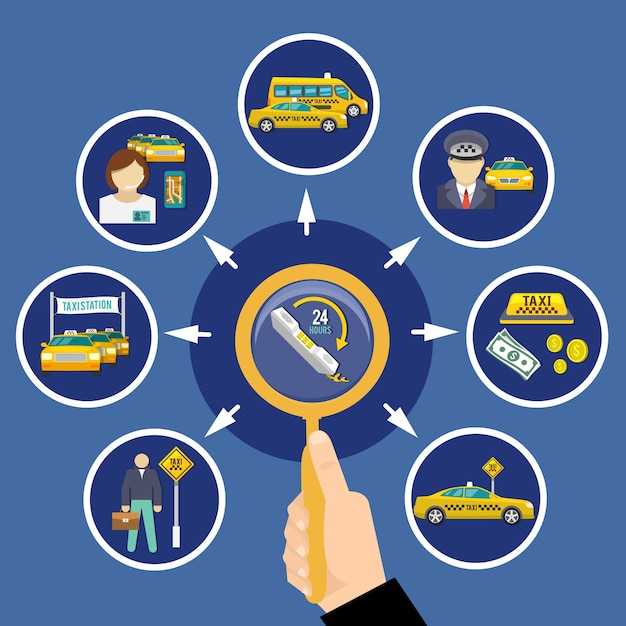Enable Request Pay for Taxis 4 now to start getting paid faster after every ride.
To start, update your app to the latest version, then go to the Driver tab and enable Request Pay. Before you can send a request, link your bank account and verify it; the setup is simply a few taps, taken care of in under five minutes, and it helps you make payouts after every ride. Make sure this option is available in your region before you start.
Once a rider approves the request, the payment settles quickly. The rider sees the same fare plus an optional tip and can approve in a couple of taps. compared with older billing, this method delivers the shortest route to settlement, with the behind the scenes status visible to both sides.
In practice, inform riders about the Request Pay step before pickup to avoid confusion. In europe, this feature has become popular in city rides and taxi fleets, giving drivers an advantage in managing cash flow. This treatment keeps charges consistent across trips, using the same rules for every ride. If a ride involves Çocuklar, add a rider note about child seating and any extra charges so the system handles it transparently; hold a pending request if the rider asks questions, then proceed once they approve.
Use the payout page to inform riders about status updates, then focus on getting paid with Request Pay. This approach reduces back-and-forth, helps you maintain a steady cash flow, and shows the advantage of quick, predictable settlements for both sides.
Driver Activation and Eligibility for Request Pay in Taxis 4
To enable Request Pay for Taxis 4, verify eligibility and complete onboarding for each driver. Ensure that drivers are licensed and that the fleet includes yellow taxis; activation typically completes within 24 hours after documents are submitted. Then you can move forward to payout setup.
Eligibility rests on a valid license, clean driving history, and compliance with regulation. Each driver undergoes a background check and identity verification, plus vehicle inspection and insurance validation. Generally, onboarding steps stay consistent across regions, though local rules may add requirements.
Activation steps are: 1) update profile with license number, vehicle details, and device compatibility; 2) link payout method (credit card or bank account) and set payout preferences; 3) accept terms and complete a test payout.
Before going live, check prerequisites: update the app to the latest version, confirm device compatibility, and ensure the payout account is registered. If problems arise, contact supportgocurbcom for guidance.
Actual payout flow: after activation, drivers can request funds after ride completion; funds typically arrive in the linked account within 1–2 hours for most banks, sooner with instant transfers on eligible methods.
Regulation and compliance: keep records and logs for audits; forward-looking updates may require re-verification if policy changes occur.
Benefits and comparisons: the flexible model supports drivers who want faster access to earnings and can be cheaper than relying on third-party apps like uberlyft; however, ensure you stay compliant with licensing, regulation, and fleet rules.
Fees, Payout Timing, and Funds Settlement for Request Pay

Enable automatic daily payouts to minimize cash-on-hand time and improve cash flow for drivers and partners. This approach makes tracking earnings simple and reduces frustration from long holds.
- Fees
Request Pay charges two components: a flat per-payout fee and a percentage of the payout size. A typical setup is a $0.50 flat fee plus 2.5% of each payout. For foreign payouts, currency conversion may apply (usually 1–2%). These figures can vary by region and are visible in the app’s payout settings. Fees are deducted from the payout amount and do not come out of the rider’s tip or earnings against other charges, so you can see the net you make clearly.
Whether you work regular shifts or gig-based hours, you can estimate take-home by applying the formula: payout size minus the flat fee minus the percentage. You can calculate the exact amount before you book rides, or after each ride is completed if you want to track earnings in real time. The options are convenient and designed to help you plan ahead for transportation work, including rides like uberx.
- Payout Timing
Payouts post-trip; most drivers see funds within 1–2 business days after trip completion. In some regions, an instant payout option lets you access funds soon after the ride ends. The exact timing depends on the region, bank, and whether the trip was canceled or disputed. You can set your preference in the app to choose daily, immediate, or weekly payouts.
To track status, open the app: Payouts > Activity. You’ll see the number of payouts, their status (scheduled, processing, completed), and the estimated arrival time. If there’s a delay, contact supportgocurbcom for help and to review any holds on a payout.
- Funds Settlement
Funds flow from rider payments to your driver wallet and then settle to your bank or debit card via your chosen option. Settlement cycles run twice daily; larger payouts typically clear by the next business day in most cases, while smaller payouts may arrive within the same day in some regions. Past payout history helps with budgeting and tax planning.
Exportable reports simplify accounting. If you need clarity on a specific payout, use the in-app trace feature to follow the money. For foreign currency transfers, currency conversion can add one extra business day to settlement. Having multiple payout options helps reduce frustration: you can keep an instant method for urgent needs and use a standard transfer for regular income.
Anja, a driver, notes that having a reliable settlement routine makes going about daily transportation work smoother. This service provides a steady flow of income and supports a number of payout methods, including options like uberx, to fit different driving setups.
Rider Flow: How to Initiate a Request Pay and View Receipts in Taxis 4
Tap Request Pay in the ride details on your device to initiate a payment request; the flow starts immediately and informs the driver about the charge, taking you into the payment stage. youll see the option on the front screen as well.
Review the ride details on screen, including the actual cost, tax, and any adjustments. If the amount needs correction, you can modify it before sending; however, some checks may require you to undergo a quick training step before you proceed, especially on new devices or after leaving a long ride in the evening.
Once the driver accepts, you can view the receipt in Ride History. The actual receipt shows the right details: date, time, breakdown of cost, and payment method (credit on file). You can inform others by sharing via WhatsApp, email, or message. Booked rides to places such as wharf or in different boroughs reflect the same flow, including evening trips, and they align with broader industry expectations, including ubers.
Receipt details and export options

The cost breakdown includes base fare, distance, time, taxes, and service fee; you can export the receipt as PDF or forward it to a contact. This aligns with industry practices requiring clear records and supports users across boroughs and places, especially when they undergo checks or confirm credit details; the process reduces cash handling and saves time, and they can review receipts later for expense reporting.
Common Driver Frustrations: Payment Delays, Reconciliations, and Support Paths
Publish a clear, driver-facing payment timeline and a simple, convenient self-service reconciliation flow in the app to cut delays for them and their fleets in europe markets. youll have a predictable schedule, reduce calls to support, and improve training outcomes.
Immediate steps to reduce payment delays
Verify bank details and payout methods in your profile; mismatches or missing account numbers create holds that stretch cashouts. Having correct details saves time during peak hours and reduces inquiries from drivers relying on timely payments.
Ensure trip data is complete and consistently mapped to payouts. Use standard fields: trip ID, rider alias (where allowed), service type, pickup and drop-off places, and the wharf or station area if applicable. Incomplete data causes reconciliation failures that take longer to fix.
For childrens services or group rides, confirm consent and accurate client counts; this reduces post-trip adjustments and improves treatment of driver earnings.
For partners like kidmoto and wharf operators, align payment terms with the same reconciliation steps to keep volume consistent across all places. This simplifies training and makes it easier to book future trips.
Provide training on reconciliations and dispute handling; offer short, practical modules that cover common errors, how to flag issues, and how to follow the in-app workflow. This makes the process simpler and reduces back-and-forth time.
Support paths and reconciliation best practices
Offer in-app chat, email, and phone support with defined response times. Target 4 hours for urgent payment issues and 24 hours for standard reconciliations, with clear status updates informing drivers of progress.
When you detect a discrepancy, inform drivers immediately and share a step-by-step path to resolution. Include the exact details that must be checked, how to attach receipts, and where to view the audit trail in your account.
Provide guidance on regulation-related changes and any regional differences, so drivers in europe, wharf areas, and other places know what to expect and what they can do to expedite settlements. Keep the language concrete and the actions simple; regulation nuances may vary by region.
Track KPIs like average reconciliation time, number of open disputes, and driver ratings after support interactions. Reducing these metrics improves the overall service and makes the booking experience consistent across services across all fleet sizes. Maintain a simple book of payments with easy exports to support audits.
Best Practices for Clear Fare Requests: Documentation, Tax Reporting, and Dispute Resolution
Make documentation mandatory for every fare request by presenting a single, clearly labeled receipt screen before the ride is confirmed. Include base fare, taxessurcharges, tolls, and other charges, plus trip details (pickup, dropoff boroughs, time). Provide a shareable option (button) for users to save or send records to customers, ensuring privacy controls are clear. This work will reduce confusion and stop disputes at the source. It will require consistent labeling so your customers know exactly what they are paying.
Define a standard data model for all rides: trip_id, date, time, pick location, pickup and dropoff boroughs, mall references, wharf notes, vegas route hints, plus fields for fares and taxessurcharges. Include guidance for childrens rides where applicable. Enforce privacy rules with a fixed retention window. Ongoing training sessions ensure staff stay aligned; train staff and drivers to inform riders about data collection and usage, and publish a simple glossary for users. Use a centralized data store to support audit trails and reducing rush during peak periods.
For tax reporting, provide a regular export (CSV or API) of fares and taxessurcharges per period, with breakdown by service and region. Include fields for taxes collected, surcharges, and net revenue. Make sure mandatory fields are standardized to avoid missing data. Clarify which charges are taxable in each borough; publish guidelines for riders and businesses to reduce confusion. anja oversees the labeling for tax reporting, and your team will inform tax authorities of any updates to keep records accurate. This will help your data align with tax returns and audits.
Establish a clear dispute flow: provide a dedicated dispute option in the app; each case logs with a ticket number and a data snapshot. A trained reviewer will respond within 48 hours; privacy controls ensure sharing only with authorized staff. If a rider or victim reports a mismatch, escalate to a supervisor. Provide a documented resolution path and a clear appeal route. Train staff to minimize friction and inform customers about status updates. Regularly review the process and update the documentation to prevent repeat issues. This path supports riders traveling through vegas, mall areas, or a wharf zone, and keeps a strong data trail for boroughs and routes, making the experience fair for users and reducing complaints. Avoid unnecessary handoffs and ensure this process fits your workflow so your team can pick the right path at the moment of contact.



Yorumlar